Discover 35 hidden attractions, cool sights, and unusual things to do in Bologna (Italy). Don't miss out on these must-see attractions: MAMbo, Stadio Renato Dall'Ara, and Museo internazionale e biblioteca della musica. Also, be sure to include Towers of Bologna in your itinerary.
Below, you can find the list of the most amazing places you should visit in Bologna (Emilia-Romagna).
Table of Contents
MAMbo
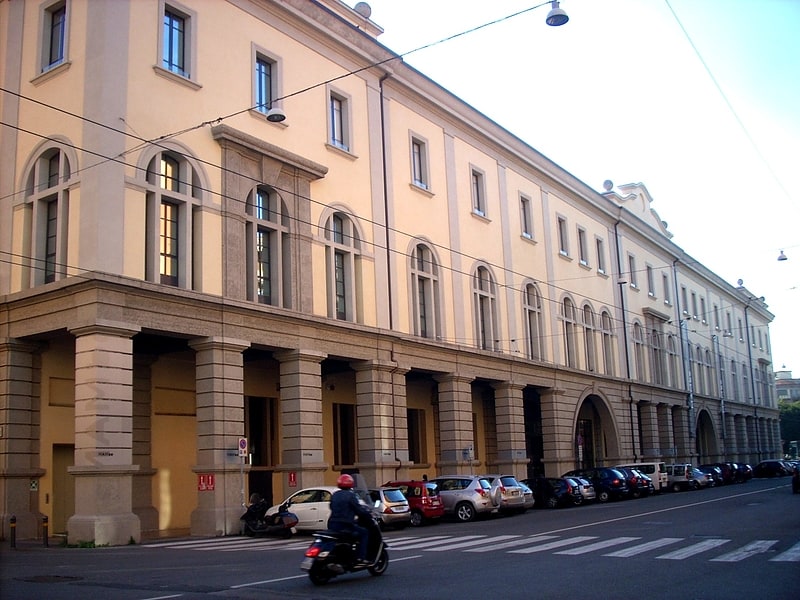
Also known as: Museo d'arte moderna di Bologna
Museum in Bologna, Italy. The Museo d'Arte Moderna di Bologna or MAMbo is a purpose-designed museum of modern and experimental art in Bologna, Italy. The Museo Morandi, which displays a large collection of works by Giorgio Morandi, is temporarily housed in a part of it.[1]
Address: Via Don Giovanni Minzoni, 14, 40121 Bologna (Porto)
Stadio Renato Dall'Ara
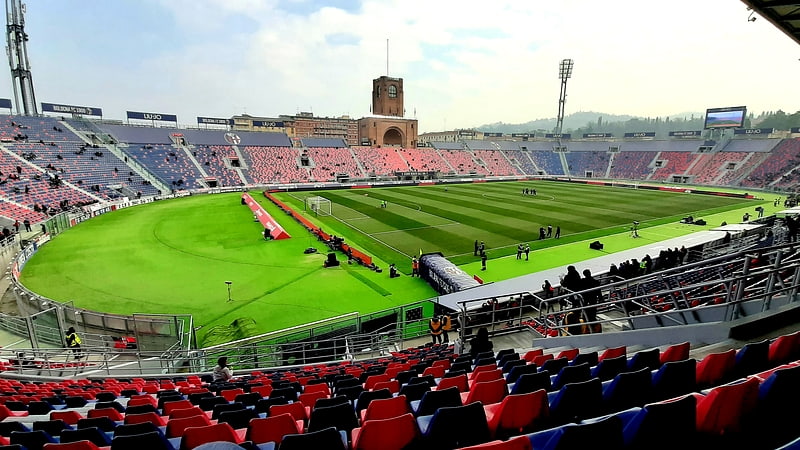
Multi-purpose stadium in Bologna, Italy. Stadio Renato Dall'Ara is a multi-purpose stadium in Bologna, Italy. It is currently used mostly for football matches and the home of Bologna F.C. 1909. The stadium was built in 1927 and holds 38,279. It has also been named Stadio Littoriale. It replaced the Stadio Sterlino. The stadium is named after Renato Dall'Ara, a former president of Bologna for thirty years.
The stadium hosted matches in both the 1934 FIFA World Cup and the 1990 FIFA World Cup. The last match of the tournament played there was the England vs Belgium match in the Round of 16 which ended 1–0 courtesy of an extra-time goal scored by David Platt in the 119th minute.
Located in the Saragozza district, about 3.5 km from the center of the city, it regularly hosts Bologna's home matches. With around 36,000 seats it is the eleventh Italian stadium for capacity, which can increase up to 55,000 for concerts.[2]
Address: Via Andrea Costa, 174, 40134 Bologna (Saragozza)
Museo internazionale e biblioteca della musica
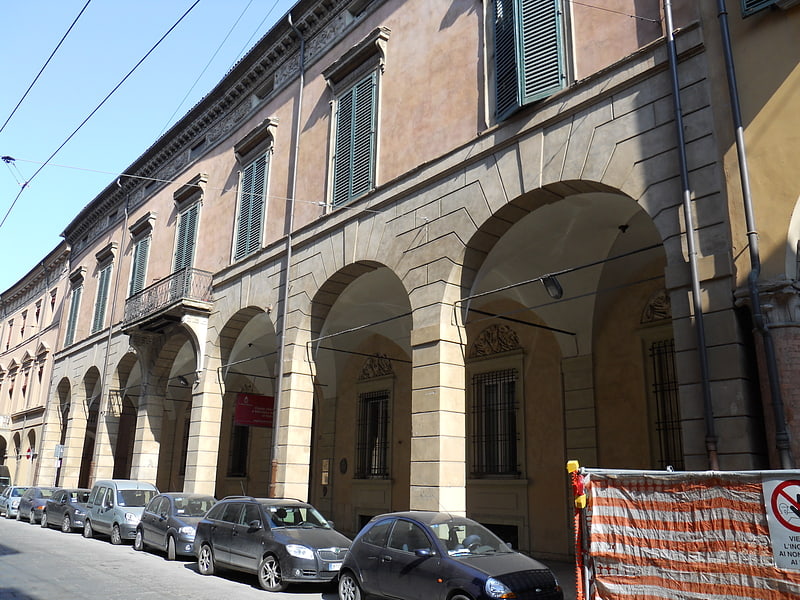
Museum in Bologna, Italy. The Museo internazionale e biblioteca della musica is a music museum and music library in the Palazzo Aldini Sanguinetti, in the historic center of Bologna, Italy.[3]
Address: Str. Maggiore, 34, 40126 Bologna (Santo Stefano)
Towers of Bologna
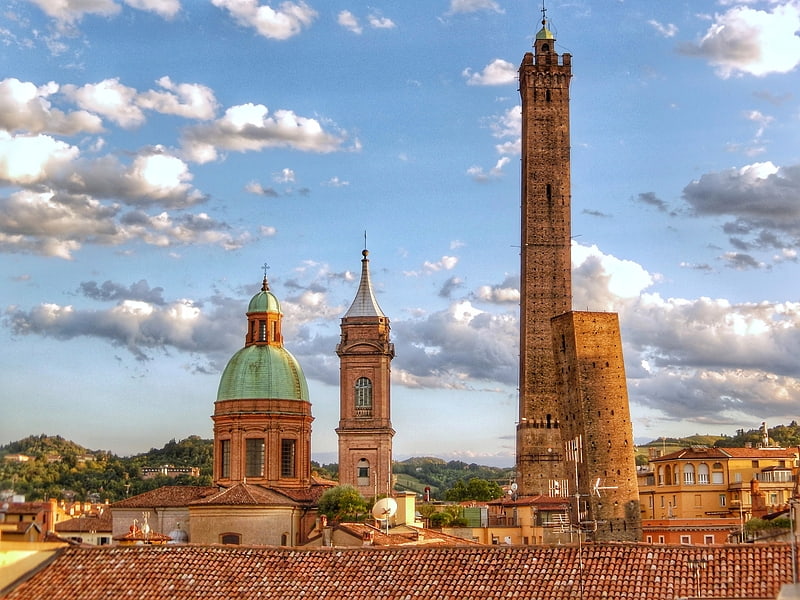
Also known as: Torri di Bologna
Iconic 1100s structures for city views. The Towers of Bologna are a group of medieval structures in Bologna, Italy. The two most prominent ones remaining, known as the Two Towers, are a landmark of the city.[4]
Archiginnasio of Bologna
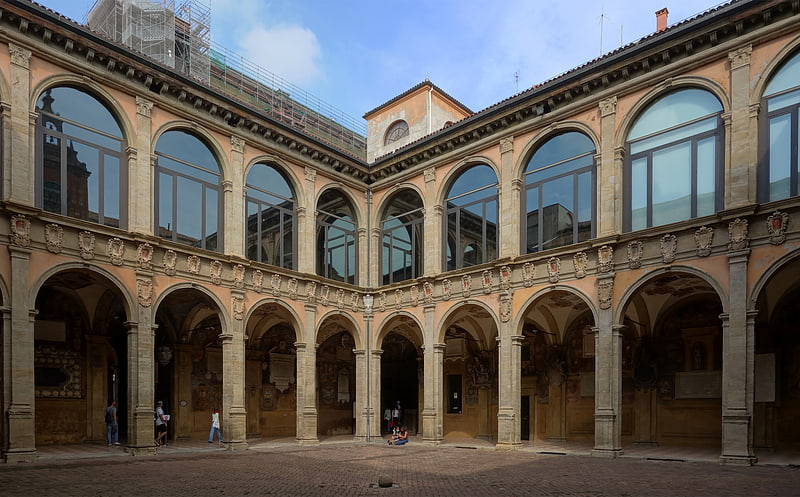
Also known as: Archiginnasio di Bologna
Prominent library and anatomical theater. The Archiginnasio of Bologna is one of the most important buildings in the city of Bologna; once the main building of the University of Bologna, it currently houses the Archiginnasio Municipal Library and the Anatomical Theatre.
In the heart of the palace is the university Chapel of Santa Maria dei Bulgari, a reflection of history.[5]
Address: Piazza Galvani 1, 40124 Bologna (Santo Stefano)
Fountain of Neptune
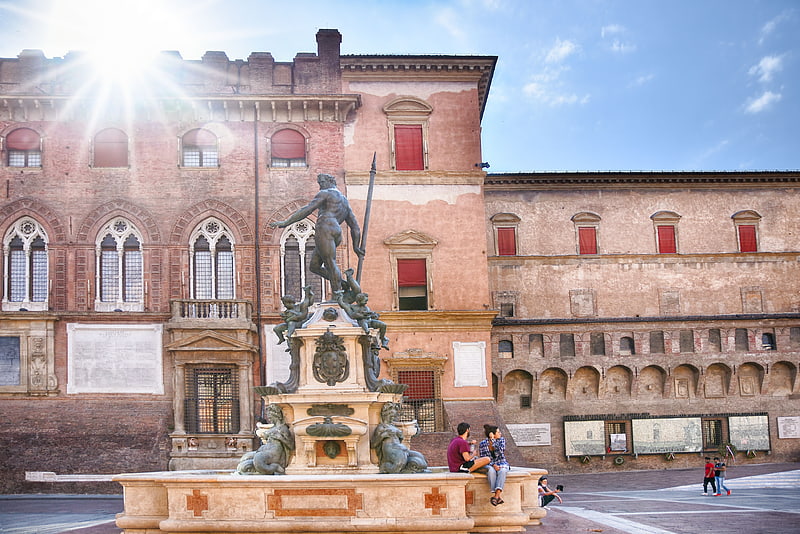
Also known as: Fontana del Nettuno
Monumental fountain crowned by Neptune. The Fountain of Neptune is a monumental civic fountain located in the eponymous square, Piazza del Nettuno, next to Piazza Maggiore, in Bologna, Italy The fountain is a model example of Mannerist taste of the Italian courtly elite in the mid-sixteenth century.[6]
Address: Piazza del Nettuno, 40124 Bologna (Santo Stefano)
Palazzo Re Enzo

13th-century palace . Palazzo Re Enzo is a palace located on Piazza del Nettuno, 1 in the historic center of Bologna, northern Italy. The palace takes its name from Enzio of Sardinia, Frederick II's son, who was prisoner here from 1249 until his death in 1272. The palace is presently used to sponsor cultural events and exhibitions.[7]
Address: Piazza Maggiore 1, 40124 Bologna (Santo Stefano)
Palazzo dei Banchi
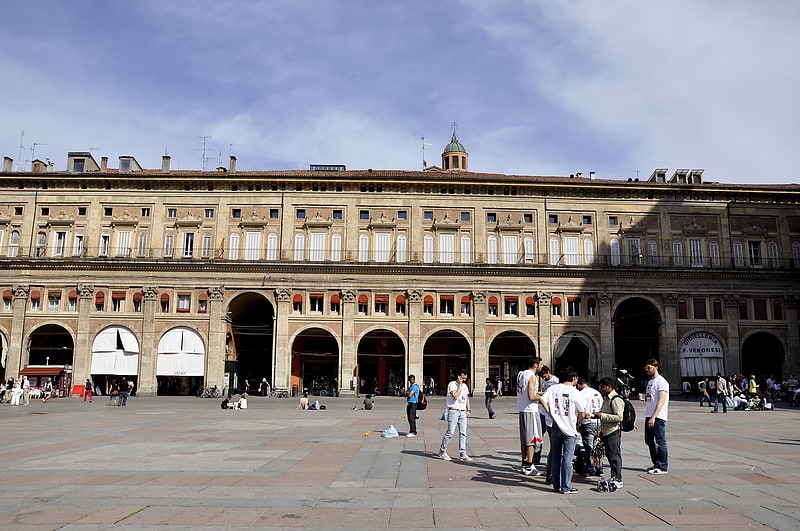
Renaissance-style palace facade. Palazzo dei Banchi is a Renaissance-style palace façade located on the eastern flank of the Piazza Maggiore in the center of Bologna, region of Emilia-Romagna, Italy.
In the 16th century when the present façade was constructed, and perhaps still, the Piazza Maggiore was the main public plaza of Bologna, surrounded by the centers of religious and political governance, represented by the cathedral (Basilica of San Petronio) and the palaces of Re Enzo (Pretorian palace) and D'Accursio (city hall). Prior to the 16th century, this end of the Piazza was represented by a jumble of house and store-fronts. In 1412, the Piazza front was roofed with a portico. Amid the houses emerged small alleys: Via Pescherie Vecchie, Via Clavature, and Via degli Orefici, each with their own concentration of businesses. Underneath the porticos adjacent to the Piazza, bankers and merchants from the adjacent shops (botteghe) set up banchi to conduct their business. In the 15th and 16th centuries, among the families owning botteghe were the aristocratic and senatorial Malvasia, Duglioli, and Amorini families.
In 1565-1568, the commune and merchants wishing to create a pleasing architectural component to this site, commissioned from the architect Vignola, the present design. The asymmetric façade has 15 rounded arches, two of which are larger and lead to the alleys mentioned above, while the others are lower. All are flanked by monumental Corinthian pilasters. Each floor has its own Mannerist rhythm of window placement, unifying the complex into what appears to be a single gallery of one palace.
The palace is connected by a portico, known as a Pavaglione, to the Archiginnasio of Bologna, one of the main buildings of the University of Bologna. The term derives from the French pavillon, meaning "pavilion", in reference to a fair of silkworms held here in 1449.
As of 2015, behind the palace on some days is an open-air market of local products. The palace itself is occupied by a combination of businesses and apartments. Also located behind the palace structure is the city's archeology museum and the church of Santa Maria della Vita.[8]
Santuario della Madonna di San Luca
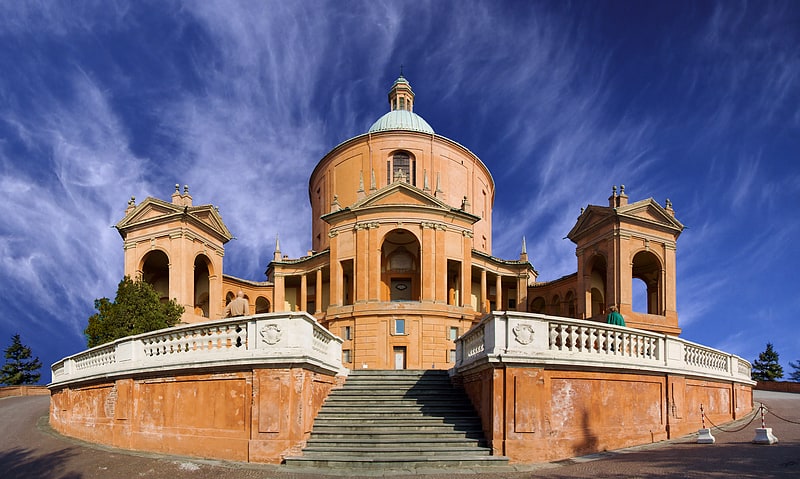
Hilltop, 18th-century sanctuary church. The Sanctuary of the Madonna of San Luca is a basilica church in Bologna, northern Italy, sited atop a forested hill, Colle or Monte della Guardia, some 300 metres above the city plain, just south-west of the historical centre of the city.
While a road now leads up to the sanctuary, it is also possible to reach it along a 3.8 km monumental roofed arcade (Portico di San Luca) consisting of 666 arches, which was built in 1674–1793. It was meant to protect the icon as it was paraded up the hill. A yearly procession from the Cathedral of San Pietro in the centre of Bologna to the Sanctuary goes along this path. Originally the arches held icons or chapels erected by the patron family.[9]
Address: Via di San Luca, 36, 40135 Bologna (Saragozza)
Santo Stefano
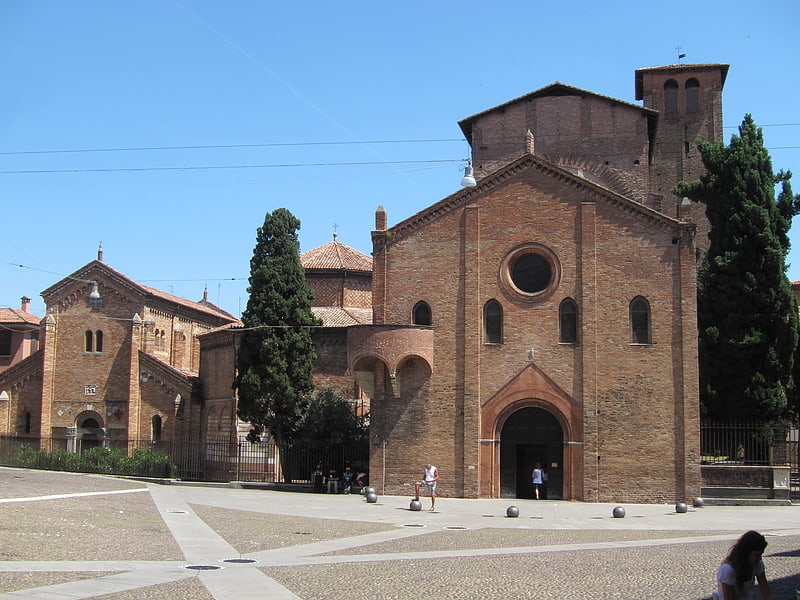
Catholic church in Bologna, Italy. The basilica of Santo Stefano encompasses a complex of religious edifices in the city of Bologna, Italy. Located on Piazza Santo Stefano, it is locally known as Sette Chiese and Santa Gerusalemme. It has the dignity of minor basilica.[10]
Address: Via Santo Stefano 24, 40125 Bologna (Santo Stefano)
Unipol Arena
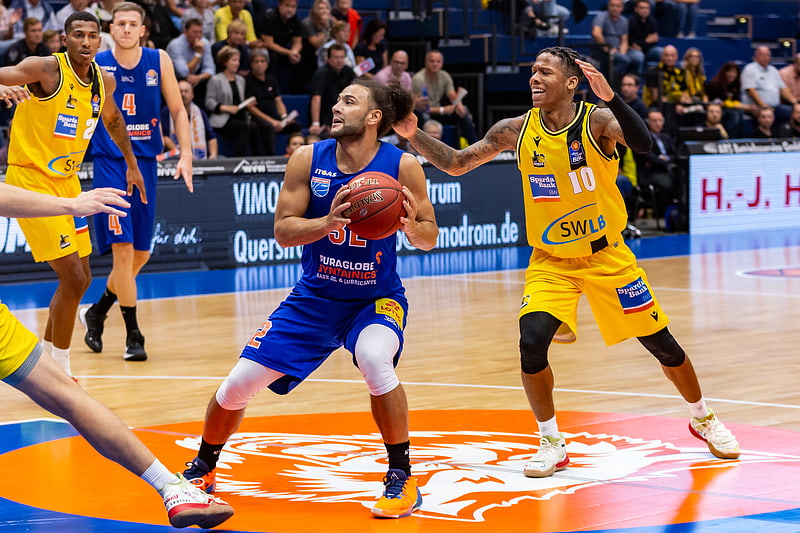
Sports arena in Italy. Unipol Arena is an indoor sporting arena located in Casalecchio di Reno, Province of Bologna, Italy. The seating capacity of the arena for basketball games is 11,000 people, and the seating capacity for concerts is 20,000 people. It was opened in December 1993. It was home to the Virtus Bologna basketball team from 1996 to 2017.
It is served by Casalecchio Palasport railway station.[11]
Address: Via Gino Cervi 2, 40033 Casalecchio di Reno
Pinacoteca Nazionale di Bologna
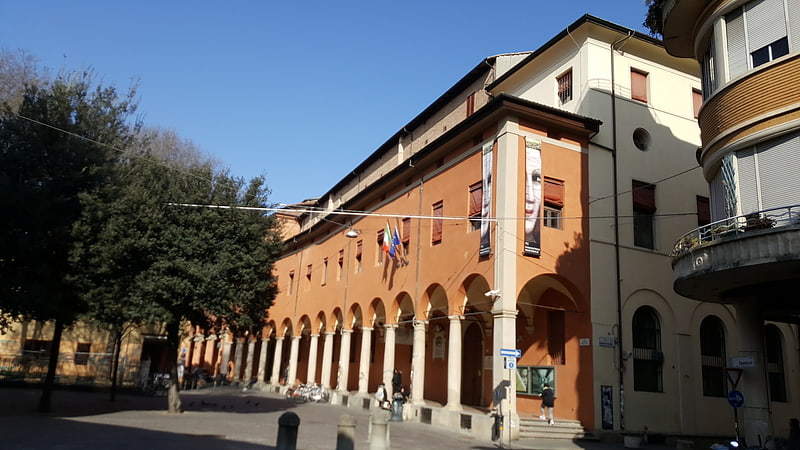
Art museum with Renaissance works. The National Art Gallery of Bologna is a museum in Bologna, Italy. It is located in the former Saint Ignatius Jesuit novitiate of the city's University district, and inside the same building that houses the Academy of Fine Arts. The museum offers a wide collection of Emilian paintings from the 13th to the 18th century and other fundamental works by artists who were in some way related to the city.[12]
Address: Via delle Belle Arti, 56, 40126 Bologna (San Vitale)
Palazzo Pepoli Campogrande
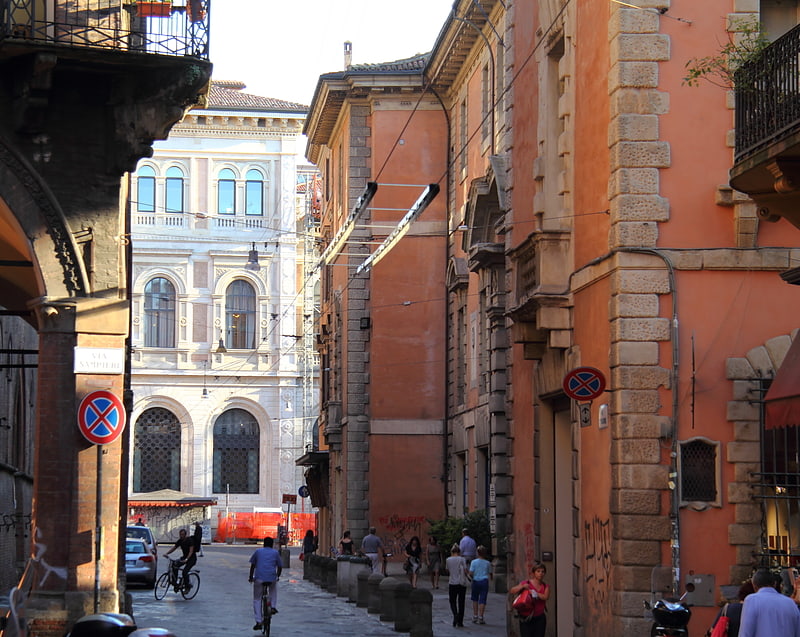
Palace in Bologna, Italy. The Palazzo Pepoli Campogrande, also known as Palazzo Pepoli Nuovo, is a Baroque style palace on Via Castiglione 7 in central Bologna, region of Emilia-Romagna, Italy. In 2015, it served as a public art gallery for late-Baroque art. Across the Via, rises the medieval Palazzo Pepoli Vecchio, also once pertaining to the same family, which now serves as a museum of the history of Bologna.[13]
San Domenico

Historic church filled with artwork. The Basilica of San Domenico is one of the major churches in Bologna, Italy. The remains of Saint Dominic, founder of the Order of Preachers, are buried inside the exquisite shrine Arca di San Domenico, made by Nicola Pisano and his workshop, Arnolfo di Cambio and with later additions by Niccolò dell'Arca and the young Michelangelo.[14]
Address: Piazza S. Domenico, 13, 40124 Bologna (Santo Stefano)
Palazzo d'Accursio

Ornate 1300s town hall and art museum. Palazzo d'Accursio is a palace once formulated to house major administrative offices of the city of Bologna, region of Emilia-Romagna, Italy. It is located on the Piazza Maggiore, and is the city's Town Hall. The palace is also home to the Civic Art Collection, with paintings from the Middle Ages to the 19th century; the Museo Morandi, with the works by Giorgio Morandi; and the Biblioteca Salaborsa, the town libraries.[15]
Address: Piazza Maggiore, 40123 Bologna (Saragozza)
Palazzo Ranuzzi
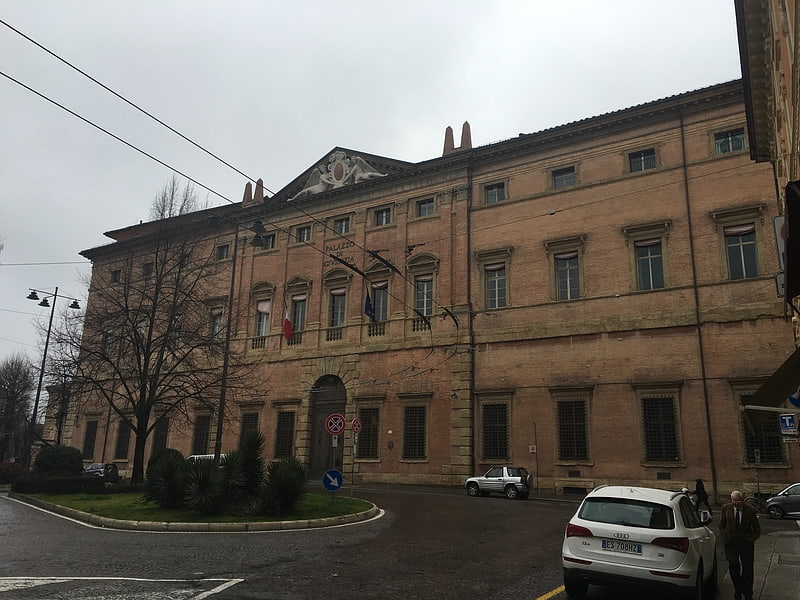
The Palazzo Ranuzzi, also called Palazzo Baciocchi or Palazzo Ruini, is a Baroque style palace in central Bologna. It is now houses the Court of Appeals of Bologna.
The palace was built in the late-1500s, commissioned by the academic and lawyer Carlo Ruini. The palace was extensively rebuilt by the Ranuzzi family, owners from 1679 to 1822, and later by Prince Felice Baciocchi, husband of Elisa Bonaparte, sister of Napoleon, and briefly grand-duchess of Tuscany. The city of Bologna bought the palace in 1873, and converted it to use by the courts.
Some attribute the original designs to an inspiration, if not plan, by Andrea Palladio, with the scenic Rococo entrance stairs by Giuseppe Antonio Torri and Giovanni Battista Piacentini. The palace contains statuary by Filippo Balugani. The interior decoration includes works by Ferdinando Galli-Bibiena and Giuseppe Maria Mazza. Frescoes were completed in various rooms by painters including Marco Antonio Franceschini, Giuseppe and Antonio Rolli, Vittorio Bigari, Antonio Basoli, Felice Giani, Giovanni Battista Sangiorgi, and Pelagio Palagi. A major restoration was completed in 1993.
- Photo di Paolo Monti, 1975
Palazzo Sampieri Talon
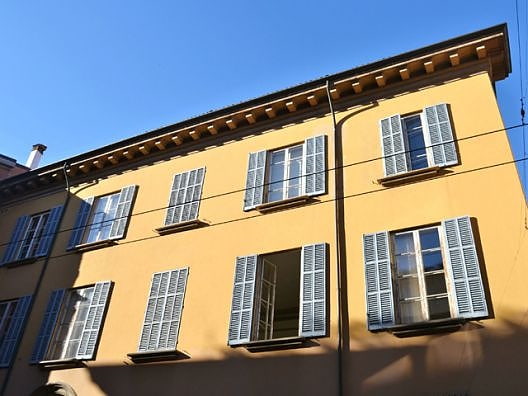
The Palazzo Sampieri Talon is a palace located on Strada Maggiore in Bologna, region of Emilia Romagna, Italy.[17]
Piazza Maggiore
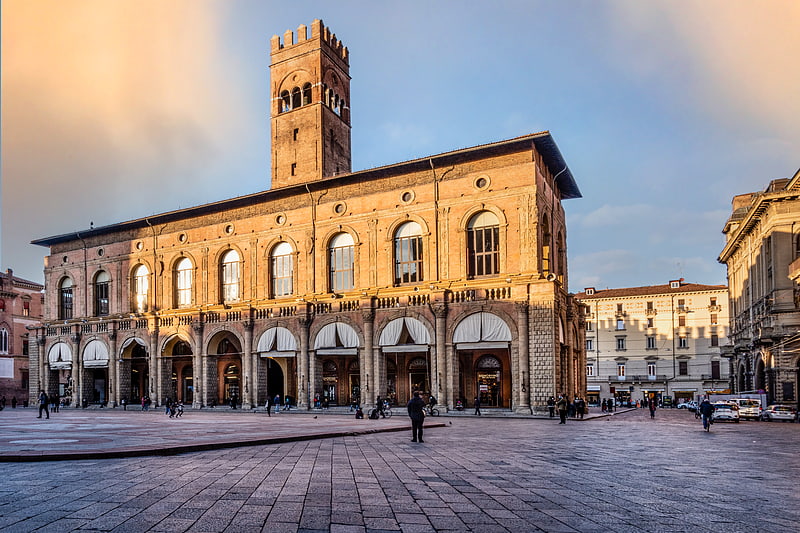
Square with cafes and classic buildings. Piazza Maggiore is a central square in Bologna, region of Emilia-Romagna, Italy. The appearance in the 21st century, generally reflects the layout from the 15th century. The Northwest corner opens into Piazza del Nettuno with its Fontana del Nettuno, while the Northeast corner opens into the narrower Piazza Re Enzo, running along the flanks of the Palazzo Re Enzo that merges with the Palazzo del Podestà. Flanking the Piazza del Nettuno is the Biblioteca Salaborsa.[18]
Address: Via Massimo D'Azeglio, 15, 40123 Bologna (Santo Stefano)
Prati di Caprara
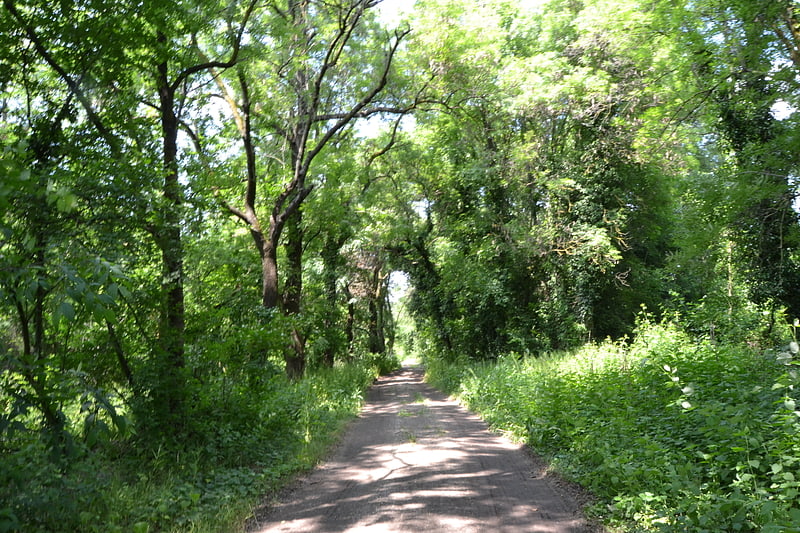
Prati di Caprara is an urban forest in Bologna, Italy.[19]
Bologna Cathedral
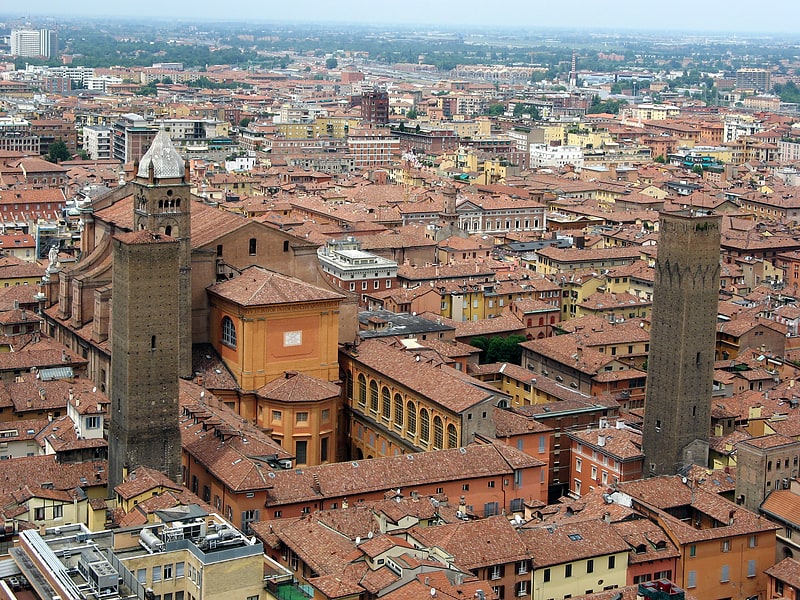
Also known as: Cattedrale di San Pietro
Landmark church with tall bell tower. Bologna Cathedral, dedicated to Saint Peter, is the cathedral of Bologna in Italy, and the seat and the metropolitan cathedral of the Archbishop of Bologna. Most of the present building dates from the 17th century, with a few parts from the late 16th century.[20]
Address: Via dell'Indipendenza, 7, 40125 Bologna (San Vitale)
Palazzo dei Notai
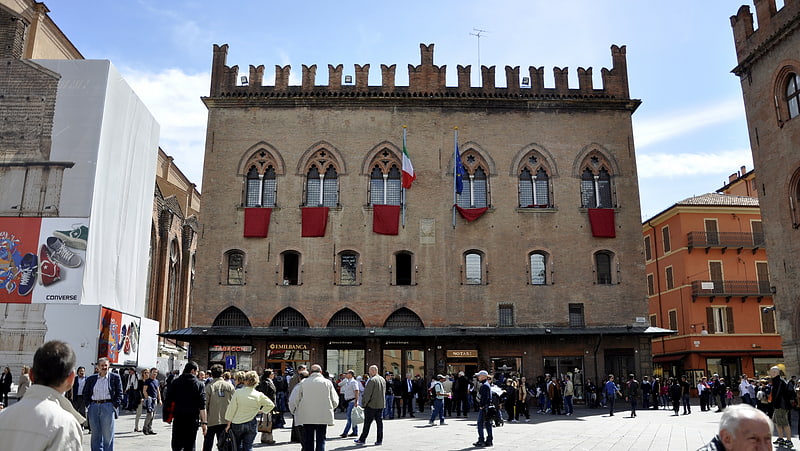
Building in Bologna, Italy. Palazzo dei Notai is a historic building in Bologna, Italy. It faces Piazza Maggiore, between the basilica di San Petronio and palazzo d'Accursio. It was built in 1381 by the city's notaries guild as their seat, under design by Berto Cavalletto and Lorenzo da Bagnomarino.
Another section facing Palazzo d'Accursio was remade by Bartolomeo Fioravanti around 1437. It was again restored in 1908 by Alfonso Rubbiani.
It consists of a brick rectangular building, crenellated on the top, with ground story awnings.
The interior has 15th-century frescoes.[21]
San Francesco
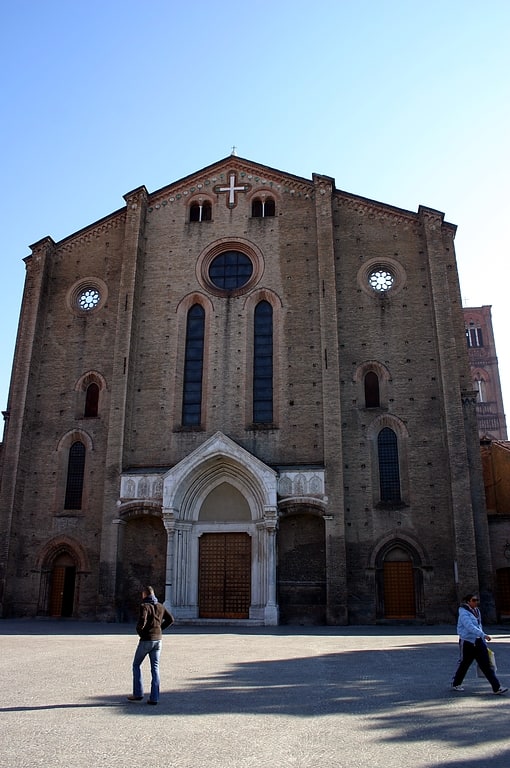
13th-century French Gothic church. The Basilica of Saint Francis is a historic church in the city of Bologna in northern Italy. Founded in the 13th century, it has been the property of the Conventual Franciscan friars since then. The church has been raised to the rank of a Roman Catholic basilica by the Holy See.[22]
Address: Piazza San Francesco 14, 40122 Bologna (Saragozza)
Porta Galliera

Historical landmark in Bologna, Italy. Porta Galliera was a gate or portal of the former outer medieval walls of the city of Bologna, Italy. It is the most ornamented of all the remaining gates.
The gate was built during 1659-1661 by designs of the architect Bartolomeo Provaglia. The interior portal has a scenic Baroque facade, while the external portal accentuates the defensive military role of a gate. The road from here led to Ferrara.
In 1330–1333, the Cardinal Bertrand du Pouget ordered construction of a castle near this gate as part of a siege. By the twentieth-century the walls were torn down, and the gate isolated. Restorations were pursued in 1926 and in 2001–2003.[23]
Palazzo Poggi
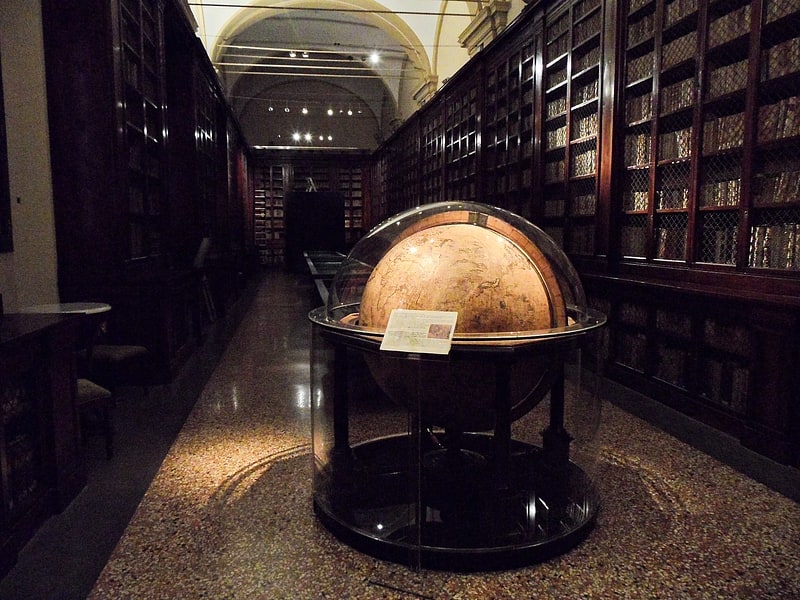
The Palazzo Poggi is a palazzo in Via Zamboni 33, Bologna, Italy. It is the headquarters of the University of Bologna and of the rector of the university.[24]
Address: Bologna, Via Zamboni, 33
Palazzo Isolani
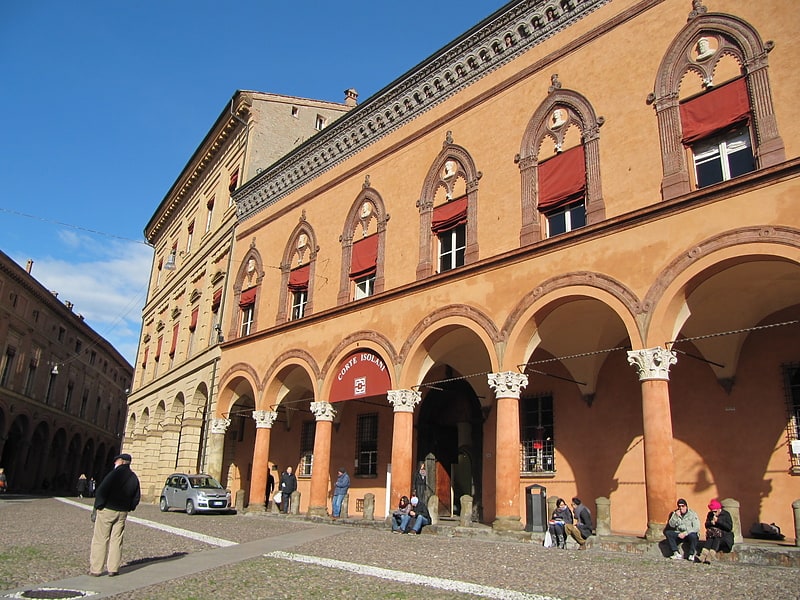
Conference center in Bologna, Italy. The Palazzo Isolani is a palace located on located on Via Santo Stefano #16 facing Piazza Santo Stefano in the center of Bologna, region of Emilia-Romagna, Italy, with both Gothic and Renaissance architecture features.[25]
Address: 16 Piazza Santo Stefano, Bologna (Santo Stefano)
Piazza Santo Stefano
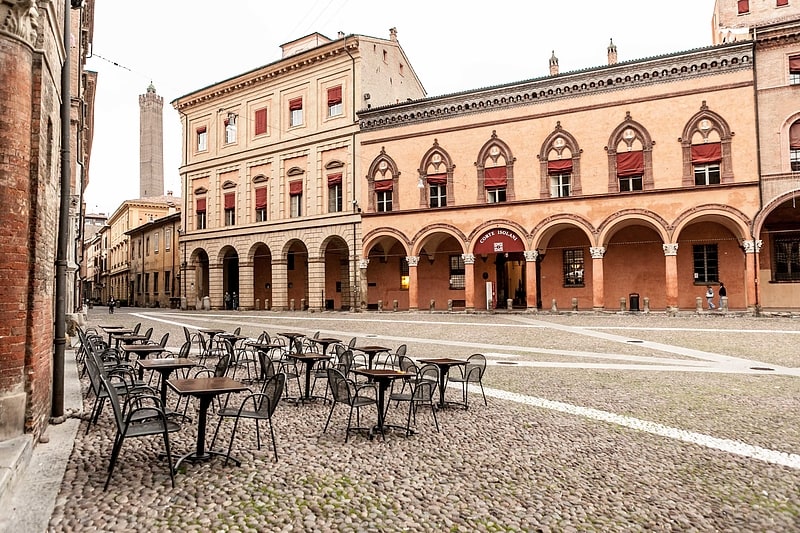
Piazza Santo Stefano also known as Piazza delle Sette Chiese is a piazza of Bologna, Italy. It is a pedestrian zone, in a triangular space near the beginning of Via Santo Stefano, both of which are named after the Basilica of Santo Stefano which is located on the piazza.
Often used for cultural events, flea-markets and concerts, it has porticos along both long sides with the Basilica occupying the short side. To the left of the Basilica is a complex of buildings joined by the powerful medieval Isolani family. From the left side you can reach Strada Maggiore via the Corte Isolani passage which was created in renovations to the Palazzo Isolani in 1999. On the right is Palazzo Bolognini Amorini Salina, notable for its frieze with terracotta heads, and the "Case Tacconi", a good example of Bolognese merchant houses of the fifteenth century.[26]
Palazzo del Podestà
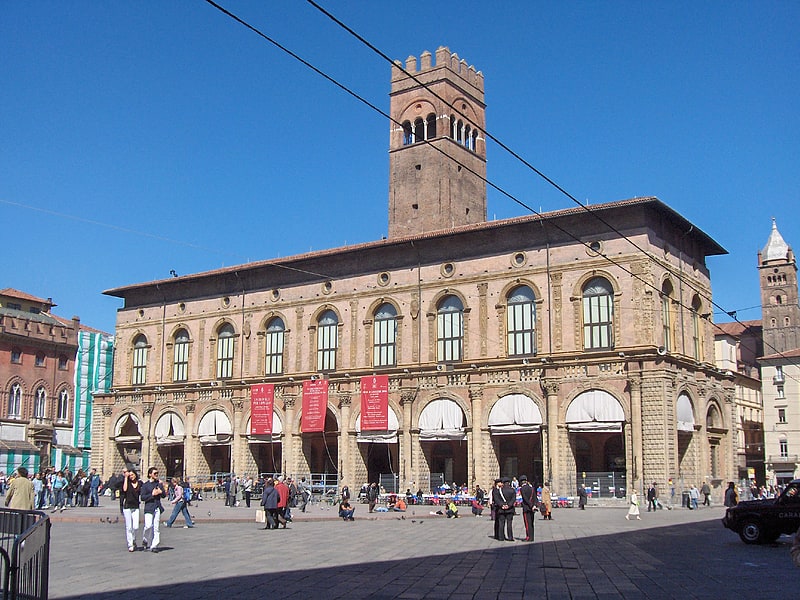
Grand civic building with elegant arcade. The Palazzo del Podestà is a civic building in Bologna, northern Italy.
The edifice was built around 1200 as the seat of the local podestà, the various functionaries of the commune. It stands on the Piazza Maggiore, near the Palazzo Comunale and facing the Basilica of San Petronio. Proving insufficient for the massive participation of the people in the city's government, it was in 1245 flanked by the Palazzo Re Enzo, over which stands the Torre dell'Arengo, whose bell was used to call the people during emergencies.
The Palazzo del Podestà is a long building, with a large hall on the upper floor. The lower floor is a double open arcade, the so-called Voltone del Podestà, through which pass two lanes of shops.
In 1453 Aristotile Fioravanti replaced the bell and reconstructed the original Gothic façade in the Renaissance style by order of Giovanni II Bentivoglio. In the Voltone, in 1525, were placed the terracotta statues of the city's protectors, Sts. Petronius, Proculus, Dominic and Francis, all by Alfonso Lombardi.
In the 16th-18th centuries the Palazzo was used as theatre. In the 20th century it was frescoed by Adolfo de Carolis.[27]
Address: Piazza Maggiore 1, 40124 Bologna (Santo Stefano)
Arca di San Domenico

Also known as: Arca di san Domenico
Sculpture by Arnolfo di Cambio, Guglielmo Agnelli, Niccolò dell'Arca, and Nicola Pisano. The Arca di San Domenico is a monument containing the remains of Saint Dominic. It is located in Dominic’s Chapel in the Basilica of San Domenico in Bologna, Italy.[28]
City Theater

Also known as: Teatro Comunale
Opera house in Bologna, Italy. The Teatro Comunale di Bologna is an opera house in Bologna, Italy. Typically, it presents eight operas with six performances during its November to April season.
While there had been various theatres presenting opera in Bologna since the early 17th century, they had either fallen into disuse or burnt down. However, from the early 18th century, the Teatro Marsigli-Rossi had been presenting operatic works by popular composers of the day including Vivaldi, Gluck, and Niccolò Piccinni. The Teatro Malvezzi, built in 1651, burned down in February 1745 and this event prompted the construction of a new public theatre, the Nuovo Teatro Pubblico, as the Teatro Comunale was first called when it opened on 14 May 1763.[29]
Address: Largo Respighi 1, 40126 Bologna (San Vitale)
Palazzo Ghisilardi Fava
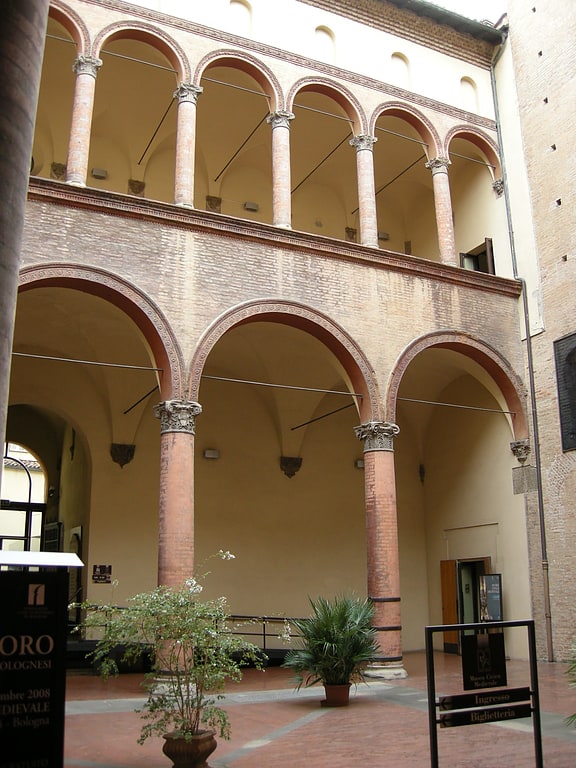
Palazzo Ghisilardi Fava is a Renaissance style palace, located on via Manzoni 4 in Bologna, region of Emilia Romagna, Italy; it houses the Medieval Civic Museum of Bologna.
Built for the notary and chancellor Bartolomeo Ghisilardi between 1484 and 1491 on designs of Zilio Montanari. In the courtyard of the palace, rises the medieval tower called Torre dei Conoscenti. The name is derived because the house on the site was owned by the Conoscenti family in the 14th century. The tower was damaged in the earthquake of 1505. During the Mussolini era, the palaze housed the Casa del Fascio of Bologna. Across the street stands the church of the Madonna di Galliera.[30]
Address: Via Manzoni, 2, 40121 Bologna (Porto)
Santi Bartolomeo e Gaetano

Catholic church in Bologna, Italy. Santi Bartolomeo e Gaetano is a Renaissance style, Roman Catholic church in central Bologna; it is located near the Due Torri adjacent to the Strada Maggiore.[31]
Address: Str. Maggiore, 4, 40125 Bologna (Santo Stefano)
San Michele in Bosco
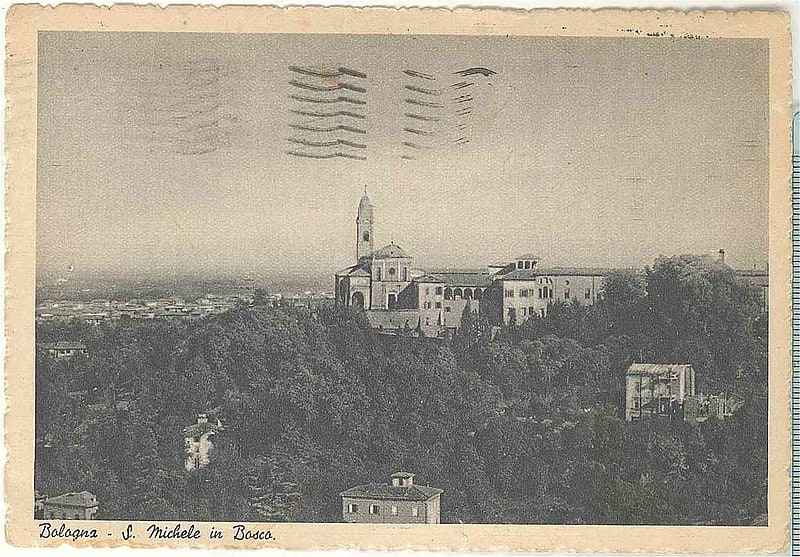
Building in Bologna, Italy. San Michele in Bosco is a religious complex in Bologna, central Italy, including the church with the same name and the annexed Olivetan monastery. The buildings of the monastery were acquired in 1955 by the municipality of Bologna, to house an orthopedic center named the Rizzoli Orthopedic Institute.[32]
Address: Piazzale di S. Michele in Bosco, 3, 40136 Bologna (Santo Stefano)
Palazzo Pepoli Vecchio
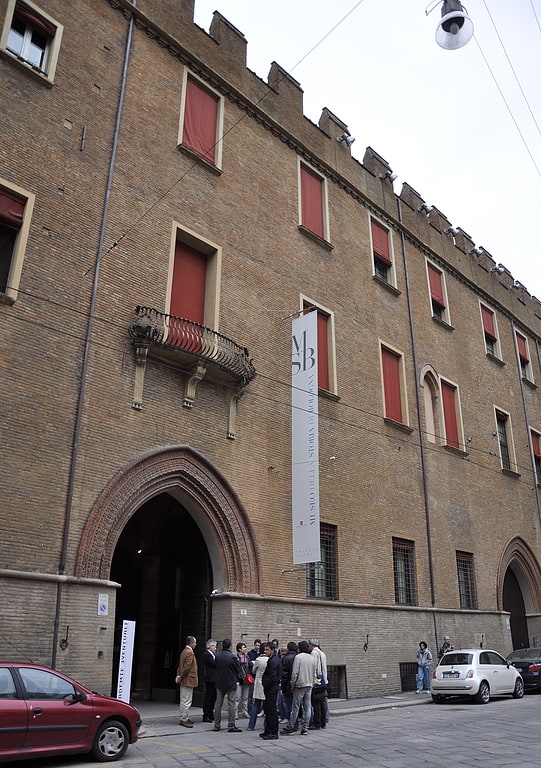
Also known as: Palazzo Pepoli
Museum in Bologna, Italy. The Palazzo Pepoli Vecchio is a Medieval palace located on Via Castiglione number 8, in central Bologna, region of Emilia-Romagna, Italy. The merlonated brick Gothic-style building is now the civic Museum of the History of Bologna. It stands across the street from the Baroque-style Palazzo Pepoli Campogrande, now a civic art gallery.[33]
Address: Via Castiglione, 7, 40124 Bologna (Santo Stefano)
Ducati Museum
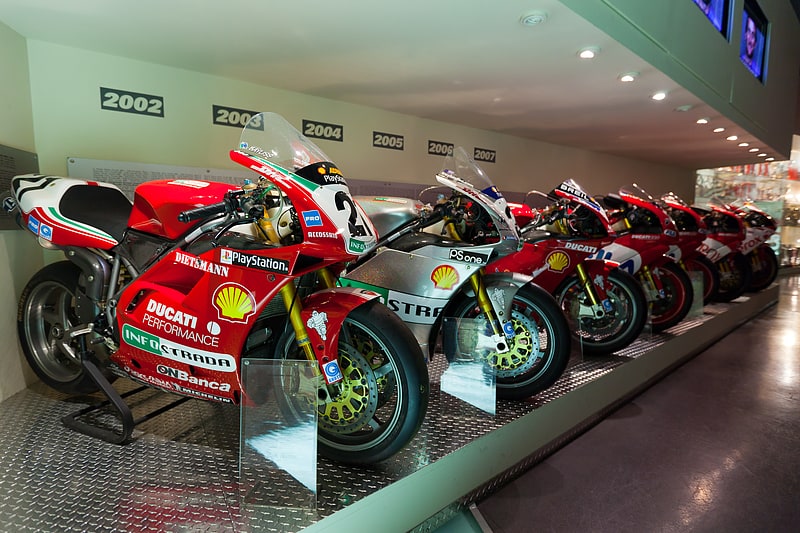
Also known as: Museo Ducati
Museum in Bologna, Italy. The Ducati Museum is a transport museum in Bologna, Italy at the Ducati factory. It contains a collection of Ducati motorcycles and some early non-automotive products. It opened in 1998.
The museum's collection of technical documentation was selected by Italian Ministry of Cultural Heritage and Activities for inclusion in the national archive.[34]
Address: Via Antonio Cavalieri Ducati, 3, 40132 Bologna
Santa Cristina
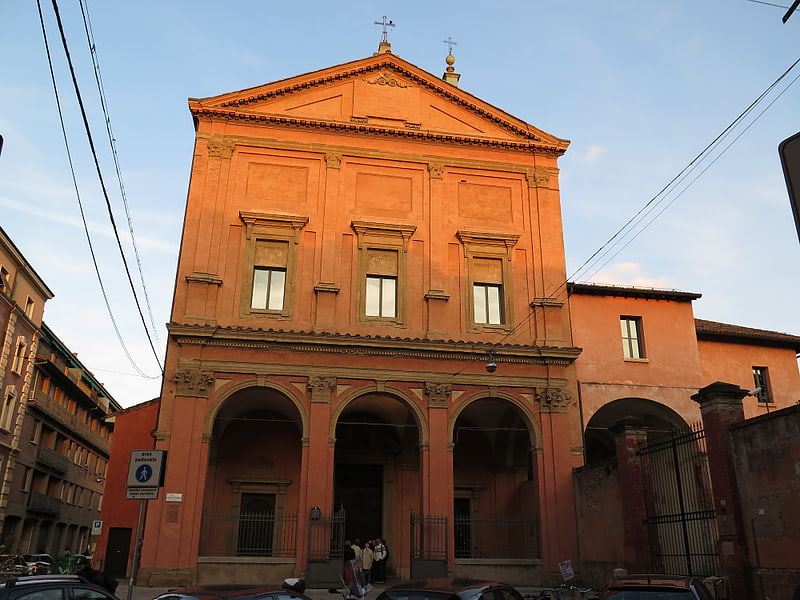
College in Bologna, Italy. Santa Cristina or Santa Cristina della Fondazza is a deconsecrated Roman Catholic church and adjacent former convent, located on Piazzetta Morandi in central Bologna, region of Emilia Romagna, Italy. Since 2007, the barrel-vaulted church has served as a performance hall for concerts, mainly of choir and classical formats, while the convent houses the Department of Visual Arts of the University of Bologna.[35]
Address: Piazzetta Morandi, 2, 40125 Bologna (Santo Stefano)